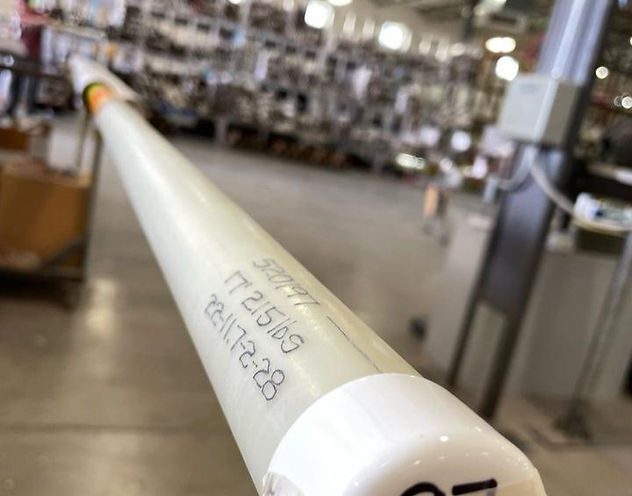Pre Competition CNS Priming:
- paul29416
- Oct 14, 2024
- 3 min read
Strategies for Pole Vaulters: Unlocking Peak Power Pre-Competition
Central nervous system (CNS) priming is a critical strategy for optimising performance in track and field athletes, particularly sprinters and pole vaulters. X Vault athletes utilise CNS priming to enhancing neural drive, increase motor unit recruitment, and improve rate of force development (RFD), which allow our athletes to access maximal power at the optimal time point. Implementing targeted CNS priming 24–48 hours before competition can significantly impact performance by improving neuromuscular efficiency and readiness.
The Science Behind CNS Priming
CNS priming enhances synaptic efficiency and motor neuron excitability, allowing for faster and more forceful muscle contractions. This process relies on potentiation mechanisms such as post-activation potentiation (PAP) and neural facilitation. PAP occurs when high-intensity, low-volume movements elicit a transient increase in muscle contractility due to phosphorylation of myosin regulatory light chains and increased alpha-motoneuron excitability. This results in faster and more synchronized motor unit firing, leading to improved RFD and force output.
Additionally, CNS priming enhances neuromuscular efficiency by reinforcing high-threshold motor unit recruitment. Given that sprinters and pole vaulters rely on Type IIb (fast-twitch) muscle fibers, optimising neural activation through targeted priming drills ensures maximal fiber recruitment during competition.
Effective CNS Priming Protocols
Contrast Training (Heavy Load → Explosive Movement)
3–4 sets back squats (85-90% 1RM) followed by explosive bounding or short sprints (10–20m).
Mechanism: PAP-induced potentiation enhances force production and speed.
Dynamic Plyometrics
Depth jumps, hurdle hops, and reactive drop jumps (3–5 sets of 3–5 reps).
Mechanism: Improves stretch-shortening cycle efficiency, optimising power output.
Sprint-Specific Neural Activation
Flying sprints, resisted sprints, and sled pulls (2–3 reps of 20m at ~30% body weight).
Mechanism: Enhances motor unit synchronisation and firing rate.
Explosive Med Ball Throws
Overhead throws, slams and rotational throws (3–4 sets of 4–6 reps).
Mechanism: Activates upper and trunk musculature.
These strategies elicit a short-term potentiation effect, enhancing power and speed expression at competition time. However, priming intensity should be individualised, ensuring the nervous system is stimulated without excessive fatigue. For elite and sub-elite track and field athletes, fine-tuning CNS activation pre-competition can provide the crucial edge needed for peak performance.
Recent research has provided valuable insights into central nervous system (CNS) priming strategies relevant to sprinters and pole vaulters, focusing on methods to enhance neuromuscular performance before competition.
Strength and Conditioning Practitioners’ Perspectives:
A 2024 qualitative study explored strength and conditioning practitioners’ views on using priming exercises pre-competition. Practitioners reported employing various stimuli, including resistance exercises, sprinting, plyometrics, and task-specific activities. The study highlighted that contextual factors significantly influenced the choice of priming exercises, and there was variability in prescription, suggesting some uncertainty about optimal protocols.
Relevant Research:
Harrison PW, James LP, McGuigan MR, Jenkins DG, Kelly VG. Resistance Priming to Enhance Neuromuscular Performance in Sport: Evidence, Potential Mechanisms and Directions for Future Research. Sports Med. 2019 Oct;49(10):1499-1514. doi: 10.1007/s40279-019-01136-3. PMID: 31203499.
Holmberg, P. M., Russell, S., O’Brien, K. A., James, L. P., & Kelly, V. G. (2023). Exploring strength and conditioning practitioners’ perceptions about using priming exercise as a pre-competition strategy to improve performance. International Journal of Sports Science & Coaching, 19(4), 1598-1611. https://doi.org/10.1177/17479541231207951 (Original work published 2024)
Duration of Priming Effects:
The duration of priming effects can vary based on the type and timing of the priming activity:
Post-Activation Potentiation (PAP): Studies have demonstrated that the neuromuscular performance benefits from PAP can dissipate within 30 minutes.
Resistance Priming: Evidence suggests that resistance priming can have delayed potentiation effects occurring between 6 and 48 hours post-activity, indicating two potential windows of potentiation.
These findings underscore the importance of tailoring CNS priming strategies to individual athletes, considering the specific demands of their events and the timing relative to competition. I suggest working out what works best with your individual athletes in the 48hour window preceding low level competitions. Once you hone in what works you can implement priming strategies into more serious competitions.
Key message:
Low volume / high intensity
48 hour window preceding competitions
For those new to CNS priming you may want to start with some fairly simple jumps throws and runs before including heavy lifting. If you are competing on a Sunday for example you may want to try priming on the Friday and it may look something like this:
Regular Warm up & cool down: then
Exercise | Sets | Reps |
Drop Jump (30cm Box) | 2 | 5 x (3sec hold) |
Pogo's | 2 | 5 meters |
Light Med Ball Overhead Throw | 1 | 4 |
Light Med Ball Slam | 1 | 6 |
Light Med Ball Rotation Throw | 1 | 4 each side |
Flying 10m Sprint | 1 | 3 |
Video:
For those athletes who are well conditioned in lifting techniques we may utilise squats or Olympic lifting variations such as hang snatch followed by some kind of bounding or over head med ball/shot throws. To learn more, I would recommend reviewing the Sprint Complex Training, Plyometrics, Medicine Ball Throwing and Warm ups sections.



Comments